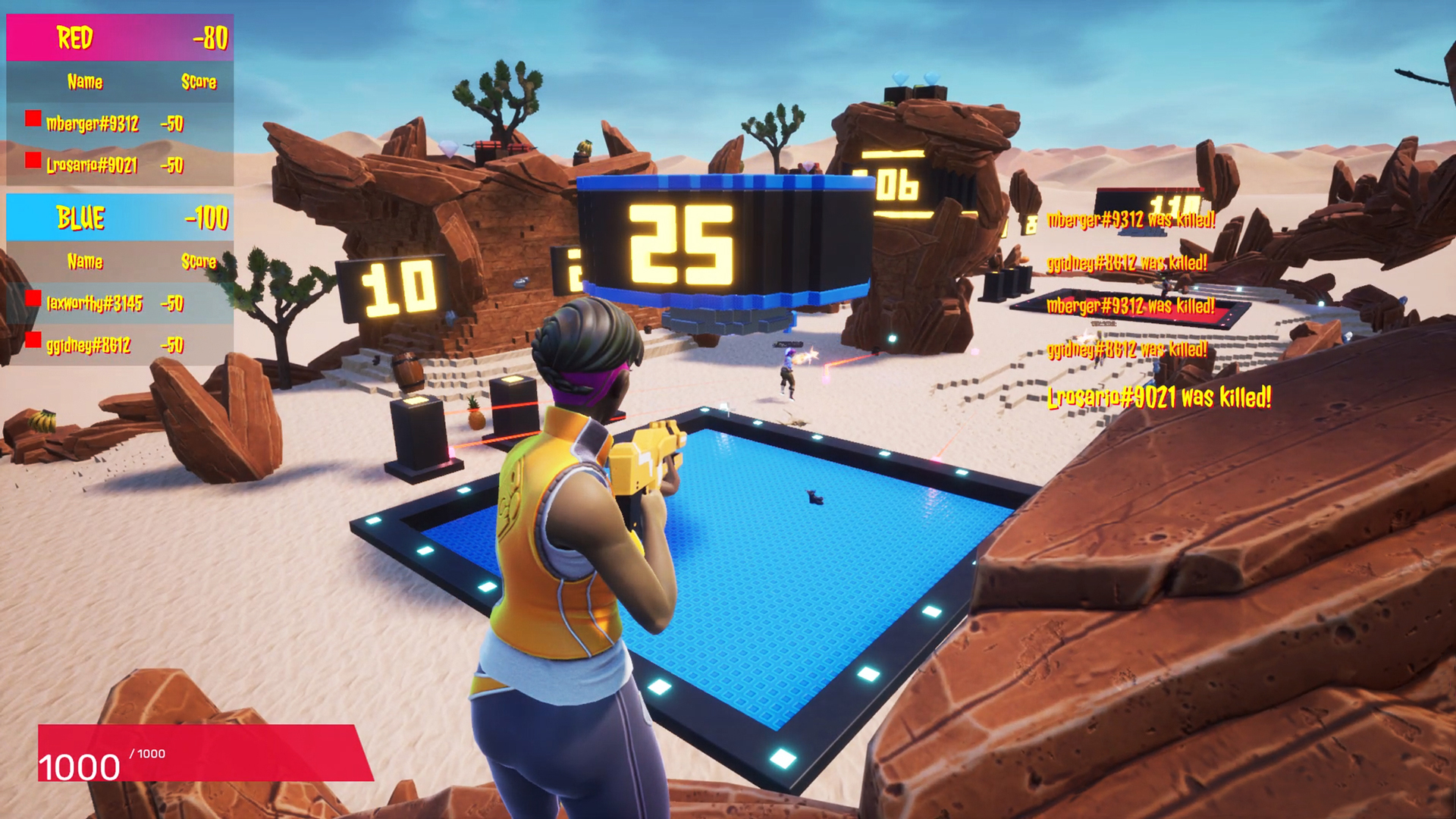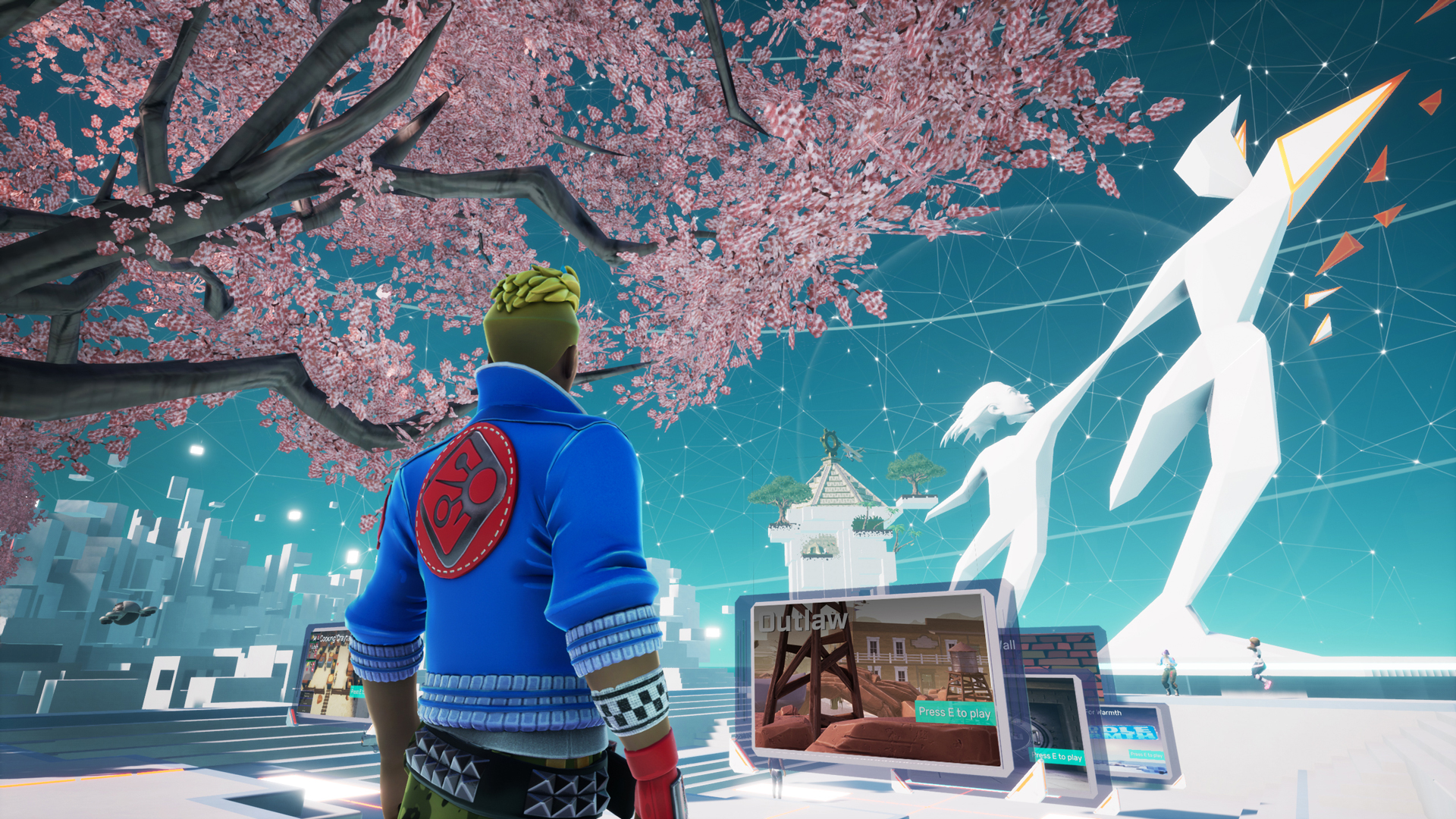GamesRadar+ Verdict
Crayta offers a wide range of tools for players to build their own games, and the collaborative spirit of it all is second to none, but the end results are not nearly as fun as the journey.
Pros
- +
Fun to create collaboratively
- +
Great teaching tool
Cons
- -
Difficult for new creators
- -
Quality of games is lacking
Why you can trust GamesRadar+

Release date: July 1, 2020
Platform(s): Google Stadia
Developer: Unit 2 Games
Publisher: Google Stadia
More than other media, video games spark the creativity of their players. Few who avidly read also write their own books, just like most movie buffs don't make movies in their free time. For whatever reason, avid gamers seem more interested in building their own worlds than existing in those created for them and, as a result, there are a number of legitimate game making tools to help them through the process. Though it's not as deep as Dreams or as malleable as Roblox, Crayta is certainly the most collaborative of all game makers to date, which leaves it feeling like a great teaching tool – even if the games created through it aren't all that appealing.
In the Stadia-exclusive Crayta, players customize their own character from a short list of options before they quickly fall into a world of user-generated creations. Built on Lua, the same coding architecture that birthed Roblox, Crayta has the advantage over rival creation platforms of being hosted in the cloud. This means you are able to instantly tweak your creations on one screen and see it live on another; it's a feature that impresses right away and serves as a reminder of Stadia's promise, despite the service's rocky launch.
Game creation with friends

If you have used other game creation platforms in the past, Crayta will feel comfortable right out of the gate. Similarly, if you're already familiar with coding and the creation of virtual worlds, you'll find the tools within Crayta easy to get to grips with. Sadly, that also means the learning curve remains steep for inexperienced players. Crayta takes steps to remedy this with its best and starring feature: the ability to build cooperatively. Using Google Stadia's State Share functionality (which is launching in beta alongside Crayta), you have the option to access a live build session with other players. Only those with the code will be able to access the game, making it like a living Google Doc for players to jump into and start creating all at once.
This opens up some awesome possibilities. Being rather inexperienced with creating games myself, I was joined by other players who walked me through the many intricate steps I'd need to take to put my own virtual world together. This included some of the base functions of creation, like manipulating terrain to more advanced tools like scripting audio cues and creating elevators. With over 700 assets at launch and more promised to release regularly – not to mention the ability for players to create and share their own scripts with others – Crayta is a game creation platform with the potential to improve exponentially over time. More than most creation platforms, Crayta will benefit from a busy community as it will mean more tools for everyone and a more gradual learning curve for new creators.
Sadly, such a thing is needed right now as the game itself offers few proper tutorials. There are a handful of game outlines, like skeletons for players to observe to help them understand how to engineer different genres of game, but these behave more like museums. The possibility to make step-by-step guides for players is present in Crayta, but the team has strangely not done much with it, leaving it up to the community to sort itself out. No doubt skilled players will do just that over time, but inexperienced coders may want to wait a while before playing, to allow the community to expand on the teachable aspects of the game.

"Inexperienced coders may want to wait a while before playing, to allow the community to expand on the teachable aspects of the game."
At launch, Crayta is missing some elements I would have thought would be vital to a game creation suite. I was sad to see no workable vehicles are in the game, for example, though advanced players will likely make their own in Suessian fashion. There's also no option to add NPCs right now, which immediately limits the types of experiences that can be built. The team at Unit 2 Games says these are both high on their list of post-launch additions, but they seem strangely absent at launch.
While it's definitely missing some elements across the board, the tools available are still much deeper when accessed via a PC, rather than any of the other supported Stadia devices you may have in your home. From there you can open up advanced mode, which will let you script behaviors and tweak the properties of anything the game offers. This is where anyone serious about creating a game in Crayta will need to spend their time, though for novices there's still a novel pleasure of making a game on your phone from the couch like Stadia allows.
The game's library of sounds and effects is quite strong. I was able to find several of my needed sounds right away even as they're not the sorts of things you'd guarantee would be there. The 700+ meshes, on the other hand, sometimes look a little lackluster. Created characters all have a fun cartoonish look to them, aided by the game's juxtaposed clothing of future and retro aesthetics. Meanwhile, worlds are made up of voxel blocks and assets have a plainly realistic look, giving the game a strange mash-up of three different styles. Ultimately, it fails to capture any standout look for itself by being so jumbled all the time. Dreams has its fuzzy feeling and Roblox is quite hideous, but at least I know a Roblox game when I see it. Crayta has no signature style.
A solid foundation

While my favorite element of Crayta is the teaching potential, I fear players may still be turned off by the final exam, so to speak. Whether they were the games built by Unit 2 itself or other reviewers, none of the games I played in my time with Crayta felt like something that warranted more than a few minutes of exploring.
Shooters are crippled by bad combat mechanics, and I'm not sure if any player-made scripts will change that later. Platformers play a bit better, but they can still feel inaccurate in some cases. Other games are better, but by now have been seen in too many other games, like Prop Hunt. There's even an Overcooked-like game at launch (Crayta Cooking), but it offers little of the flair and none of the exciting difficulty ramp of the real thing, instead playing like a poor copy.
Game after game, I was underwhelmed by what's on offer so far, and while this is a game that will look very different six months from now – heck, even a week from now – I worry the foundationally faulty movement mechanics will hamper virtually any project, no matter how intricate the code or glorious the level.
Being able to share a world and build with other players in a live setting doesn't just rethink multiplayer, it means experts can instruct the novices in a manner that may prove invaluable to coding programs in schools around the world. That's what makes Crayta so intriguing even as its final results don't improve upon the silly jank-heavy games popularized by Roblox years ago. Crayta is a better teaching tool than it is an actual game, and in time its virtual worlds should be filled out with user-generated content that is usually enlightening, but rarely entertaining.
Mark Delaney is a prolific copywriter and journalist. Having contributed to publications like GamesRadar+ and Official Xbox Magazine, writing news, features, reviews, and guides, he has since turned his eye to other adventures in the industry. In 2019, Mark became OpenCritic's first in-house staff writer, and in 2021 he became the guides editor over at GameSpot.



